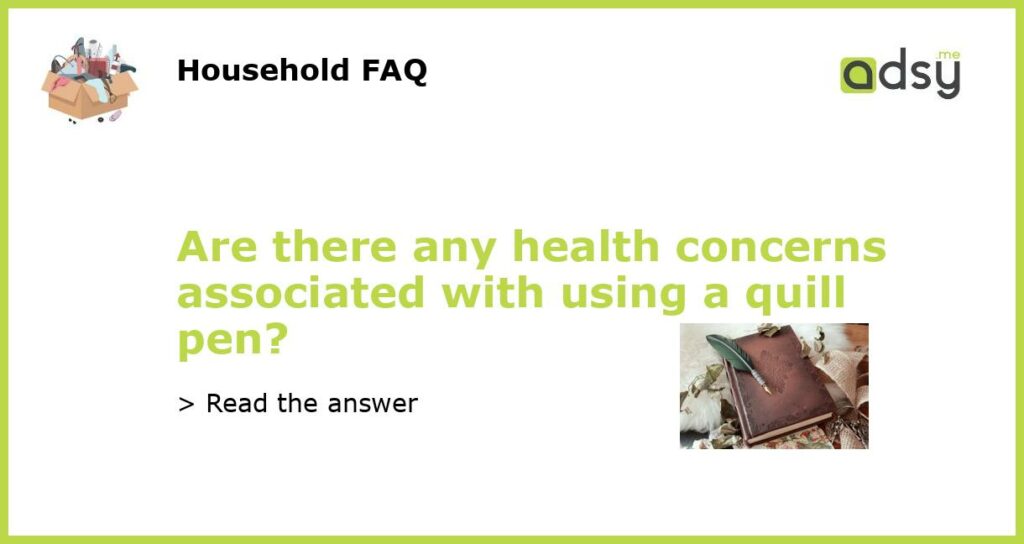The History of the Quill Pen
The quill pen, made from the feather of a large bird, was widely used as a writing instrument for centuries. It became popular in the Middle Ages and continued to be used until the invention of the metal pen in the 19th century. The quill pen allowed for a smooth flow of ink, making it ideal for calligraphy and fine writing. However, while the quill pen had its advantages, it also had its drawbacks.
The Potential Health Concerns
One of the main concerns associated with using a quill pen is the risk of infection. The feather used to make the pen may contain bacteria or other microorganisms that could be transferred to the user’s skin or mucous membranes. This could lead to skin infections or respiratory problems, especially if the quill pen was shared among multiple users.
Another potential health concern is the risk of injury. The quill pen had a sharp tip, which could accidentally puncture the user’s skin and cause bleeding. Furthermore, prolonged use of the quill pen could lead to hand cramps and discomfort, as it required a certain level of pressure to make the ink flow smoothly.
Preventing Health Issues
To prevent the spread of infections, it was important to properly clean and sanitize the quill pen. This could be done by washing the feather with soap and water, followed by soaking it in an antiseptic solution. It was also advisable to have a personal pen and not share it with others, especially during times of illness or epidemic.
To avoid injury, users were advised to handle the quill pen with care and avoid applying excessive pressure when writing. It was also recommended to take regular breaks and stretch the hand and fingers to minimize the risk of cramps and discomfort.
Modern Alternatives
With the invention of the metal pen and later the ballpoint pen, the use of the quill pen declined. These modern writing instruments offered convenience, durability, and a reduced risk of infection and injury. However, some individuals still choose to use quill pens for their aesthetic appeal and historical significance.
If you are interested in using a quill pen, it is important to take proper precautions to ensure your health and safety. Clean and sanitize the pen regularly, avoid sharing it with others, and take breaks to prevent hand cramps. Additionally, be mindful of potential allergens if you have sensitivities or allergies to feathers.
The Bottom Line
While the quill pen offers a unique and nostalgic writing experience, there are potential health concerns associated with its use. These include the risk of infection from bacteria on the feather and the risk of injury from the sharp tip. However, with proper care and hygiene practices, these concerns can be minimized. It is ultimately up to the individual to weigh the aesthetic appeal and historical value of using a quill pen against the potential health risks.






